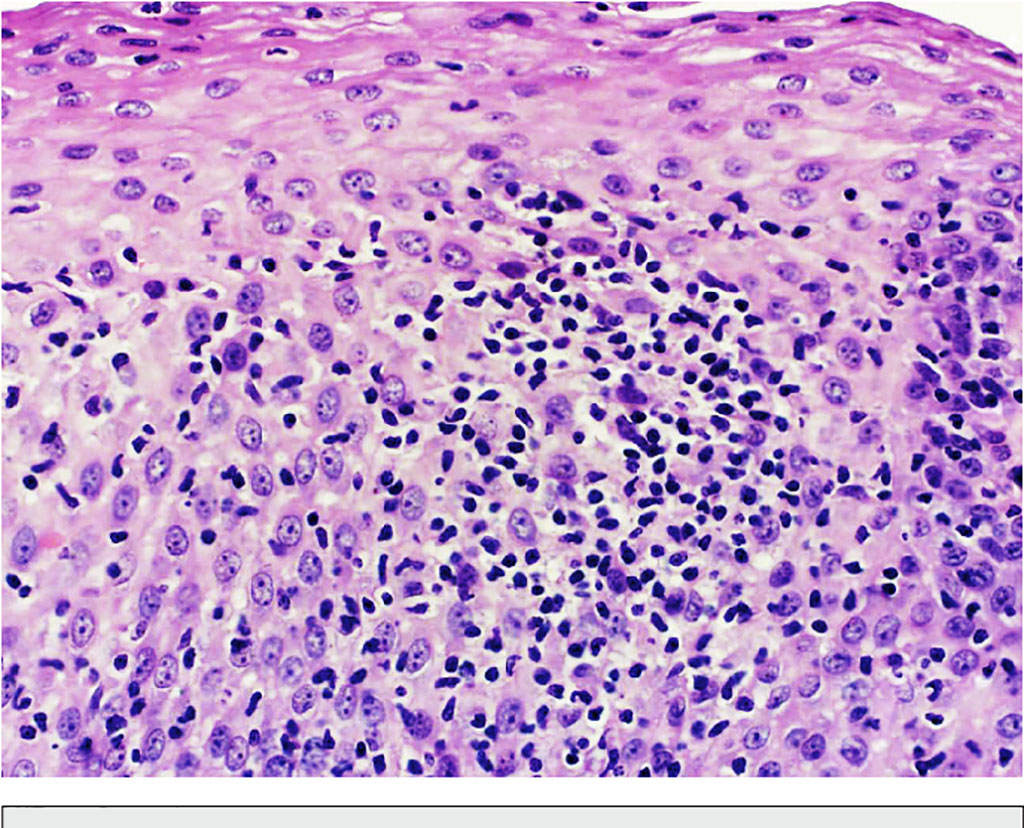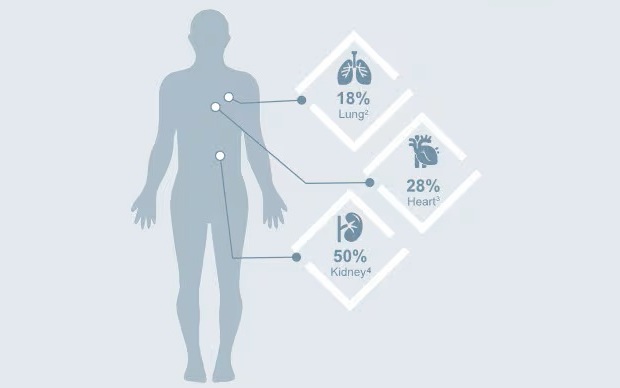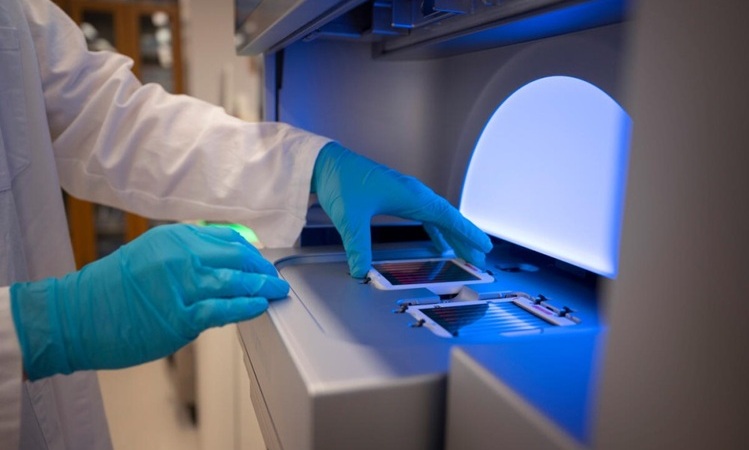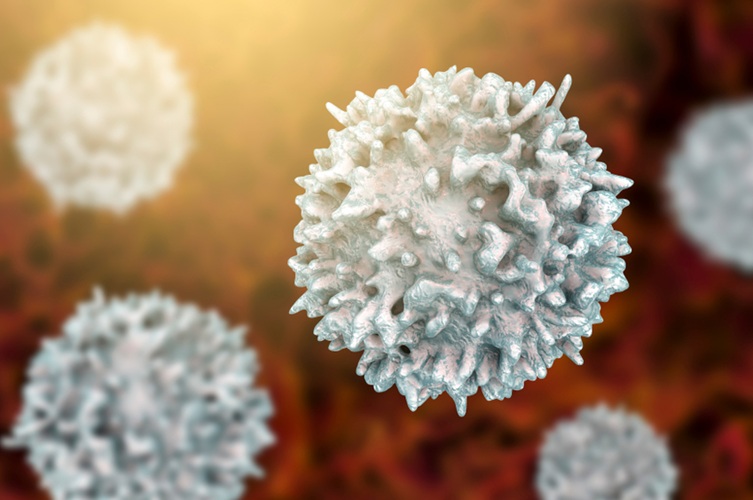CD8 T-Cell–Predominant Lymphocytic Esophagitis Associated with GERD
By LabMedica International staff writers
Posted on 05 Oct 2021
In patients with reflux esophagitis (RE), increased lymphocytes are often part of a mixed inflammatory infiltrate that also includes eosinophils and/or neutrophils. Less frequently, lymphocytes are the only type of inflammatory cells associated with gastroesophageal reflux disease (GERD). Posted on 05 Oct 2021
One such pattern is lymphocytic esophagitis (LyE), which is characterized by an elevated number of peripapillary lymphocytes and absent or rare intraepithelial granulocytes. This pattern has been reported in approximately 5% of patients with endoscopic esophagitis and 7% of patients with Barrett esophagus.

Image: Histopathology photomicrograph of lymphocytic esophagitis: Esophageal mucosa showing peripapillary intraepithelial lymphocytosis with basal zone hyperplasia and intercellular edema. No significant population of eosinophils or neutrophils is identified (Photo courtesy of Yusuf Kasirye, MD, et al)
Clinical Scientists at the Dartmouth-Hitchcock Medical Center (Lebanon, NH, USA) conducted an observational retrospective study and identified 161 patients seen at their institution from 1998 to 2014 who were diagnosed with GERD, had normal esophageal motility, and available esophageal biopsies. For all patients meeting inclusion criteria, the team obtained demographic data as well as information pertaining to clinical diagnosis, past medical history, and endoscopic, imaging, manometry, and, where available, pH-metry findings from the files and electronic medical records.
Biopsy specimens were fixed in 10% formalin, paraffin-embedded, and stained with hematoxylin-eosin. A single peripapillary lymphoid infiltrate was sufficient for the diagnosis of LyE. The cutoffs for a normal number of intraepithelial lymphocytes evaluated in hematoxylin-eosin–stained slides at different levels, such as gastroesophageal junction, distal esophagus, and midesophagus were 62, 46, and 41 lymphocytes per high-power field, respectively. Cells were counted in one mostly affected high-power field using an Olympus BX 41 microscope (Olympus, Center Valley, PA, USA). Routine CD4 and CD8 immunohistochemistry was performed using Bond Polymer Refine Detection staining reagents and Bond III autostainer (Leica Microsystems, Buffalo Grove, IL, USA).
The scientists found increased intraepithelial lymphocytes in 13.7% of patients with GERD. Two major patterns and one minor pattern of lymphocytic inflammation were observed as follows: (1) LyE (in 6.8% [11 of 161] of patients and typically focal), (2) dispersed lymphocytes in an area of reflux esophagitis (in 5.6% [9 of 161] and typically diffuse), and (3) peripapillary lymphocytes in an area of reflux esophagitis (in 1.2% [2 of 161]). CD8 T cells significantly outnumbered CD4 T cells in 91% of patients with lymphocytic esophagitis and 100% of patients with dispersed lymphocytes (9 of 9) or peripapillary lymphocytes (2 of 2) in the area of reflux esophagitis.
The authors concluded that their findings suggest that LyE is one of the major patterns of lymphocytic inflammation in GERD. CD8 T-cell–predominant immunophenotype may be useful as a marker of GERD in the differential diagnosis of LyE. The study was published in the September 2021 issue of the journal Archives of Pathology and Laboratory Medicine.
Related Links:
Dartmouth-Hitchcock Medical Center
Olympus
Leica Microsystems













